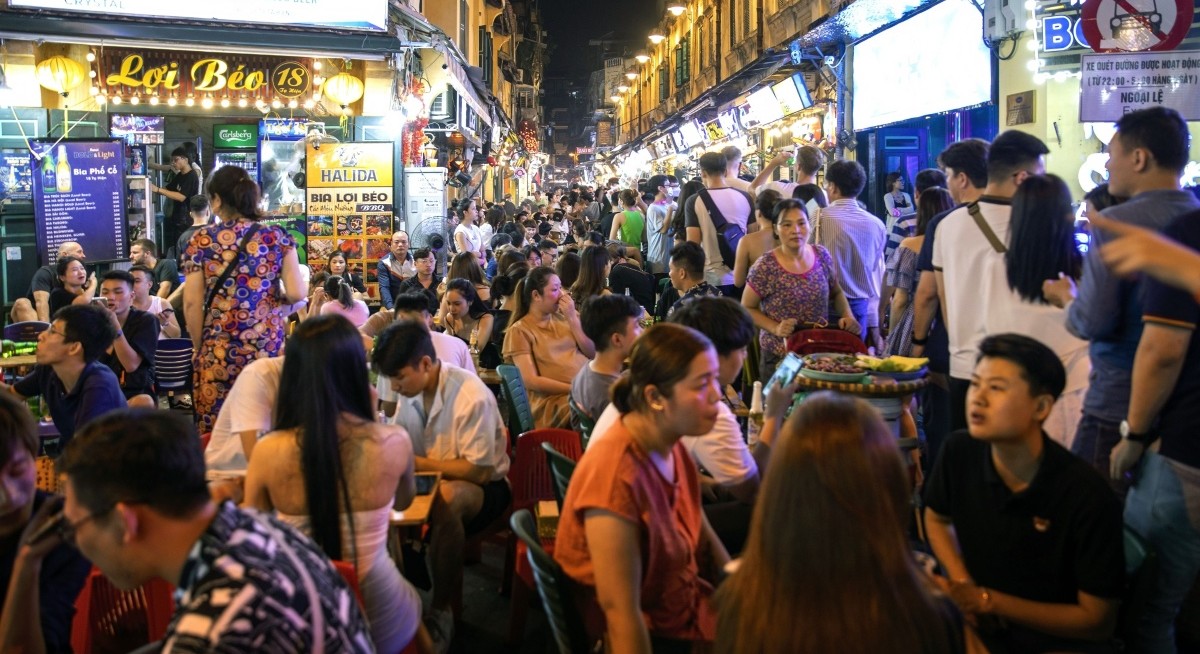They are forecasting Asean-5’s gross domestic product (GDP) to slow but remain relatively resilient at a rate of 4.7% in 2023, down from 5.9% in 2022, despite the US and global growth downturn. The analysts are also projecting the grouping’s GDP growth to be higher than China’s expected growth rate of 4.0% in 2023 for a second consecutive year. The Asean-5 grouping comprises Indonesia, Malaysia, the Philippines, Thailand and Vietnam, and excludes Singapore.
The Maybank team says that China’s shift away from its zero-Covid policies will be slow and incremental. Restrictions to mobility and travel will remain stringent for most of 2023, while the real estate crisis in China will also dampen consumer spending and investment, they add.
Meanwhile, Asean economies and markets will continue to be cushioned by the reopening tailwinds and could “partially decouple” from a US recession for several reasons.
See also: Capital-hungry Indonesia to reduce hurdles for foreign investors
First, the analysts believe the tailwinds of the economic reopening are dissipating but still not over. They note that accommodation, food services, construction and air transport are still below pre-pandemic levels in some Asean countries, with foreign visitor arrivals still generally less than 50% of pre-pandemic levels.
As of 3Q2022, construction is still 18% below pre-pandemic levels in Singapore and 20% below in Malaysia and Philippines. Accommodation and food services is 28% below pre-pandemic levels in Philippines, 25% below in Thailand, 12% below in Malaysia, 11% below in Singapore and 7% below in Vietnam.
Among the Asean member countries, Singapore has seen the strongest recovery in foreign visitors to pre-pandemic levels, reaching 53% of pre-pandemic levels in October, while Vietnam was the weakest, only attaining 33% of pre-pandemic levels in November. Tourists to Asean thus far have largely been intra-Asean visitors and from India. More Northeast Asian visitors from Japan, Taiwan and Hong Kong are expected in early 2023 with the recent relaxation of their quarantine requirements and border controls, say the analysts.
See also: Marcos’s sister backs VP Duterte as leader amid graft scandal
On top of these tailwinds, the Maybank team says that intra-Asean trade has proven resilient, forming a significant source of demand for the region. “Intra-Asean trade is growing at over 30%, partially cushioning the slump in exports to the US, the EU and China,” they say.
Intra-Asean market accounts for 19% of Asean’s total exports, higher than the share of exports to China, the US and the EU, which account for 16%, 15% and 9% respectively.
According to the analysts, Asean has also benefited from the reconfiguration of manufacturing supply chains away from China to the Southeast Asia region, which has seen foreign direct investment (FDI) in Asean increase significantly. “The pandemic shock, development of the Electric Vehicle industries and US Chips Act have reinforced these shifts,” explain the analysts. “Indonesia, Malaysia, Vietnam and Singapore are big beneficiaries of the supply chain shifts to Asean.”
They note that Indonesia’s foreign investment realisation surged by 66.4% in 3Q2022, driven by an 81.8% growth in manufacturing amid the government’s push to develop downstreaming industries such as nickel ore processing for electric vehicle (EV) batteries and energy storage systems. Vietnam’s foreign investment realisation also grew 15.1% in the first 11 months
of 2022, the highest dollar amount realised in 11 months over the past 5 years.
Closer to home, Malaysia’s approved manufacturing FDI soared to a record high of RM180 billion ($55.2 billion) in 2021 and is expected to translate to actual flows. In Singapore, fixed asset investment commitments in electronics — which have surpassed $4 billion annually since 2019 — also remained firm in the first 9 months of 2022.
From a macroeconomic perspective, energy and food prices could remain elevated next year despite a global downturn because of the Russia-Ukraine war, green transition and climate shocks. Asean countries that could benefit from these conditions are the major energy exporting countries Indonesia and Malaysia, as well as food exporters Thailand, Indonesia, Malaysia and Myanmar.
And despite the global shift in monetary policy to combat inflation, the analysts say that most Asean central banks are not as aggressive in tightening monetary policy — with the exception of the Philippines and Singapore. For countries like Singapore, Thailand and Indonesia , there have been encouraging signs that headline and core inflation may have peaked, giving central banks more “breathing space” to moderate their tightening pace in 2023, they add.
For more stories about where money flows, click here for Capital Section
“Inflation has been climbing across ASEAN but not to the extent seen in the US and Europe,” point out the Maybank analysts. “The more modest monetary policy tightening in Asean will limit the interest rate shock to consumer spending and business investment.”
Finally, capital flows from greater China into a “neutral” Asean have been rising because of the US-China rivalry, stricter national security regulations and divergent Covid strategies — putting Singapore in place to strengthen its position as Asia’s international financial centre.
“Singapore is benefiting from the relocation of headquarters and talent from Hong Kong and sealing its reputation as Asia’s international financial centre. Hong Kong’s reputation has been tarnished by its strict Covid policies and stricter natural security regulations. Hong Kong will likely become more of a [Chinese], rather than international, financial centre,” forecast the analysts.
Asean will only stand to benefit further should China reopen in 2023, as this would partially offset slowdown in the US and Europe, while strengthening the region’s economic outlook. China remains Asean’s single largest export market and accounted for 22% of foreign visitor arrivals pre-pandemic.
The analysts note that the reopening could also revive China’s Belt and Road Initiative (BRI) infrastructure projects, especially in Indonesia, Laos and Cambodia, which have stalled because of the lockdowns and border controls.
“Asean is not immune and cannot fully decouple from the global downturn, but there will be patches of blue skies amidst the darkening clouds,” they conclude.




